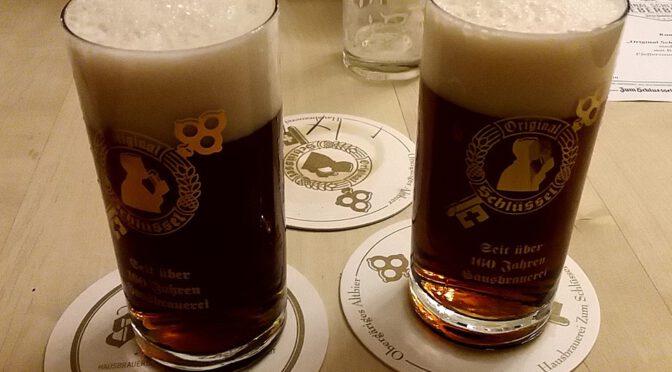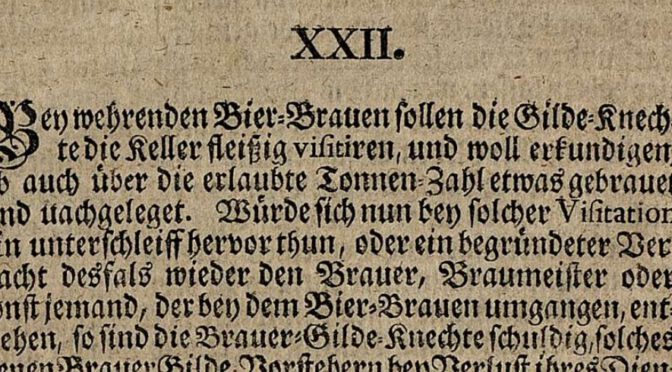I like going to the library, in particular the GGB library at the VLB in Berlin. Less than 15 minutes on the bus, a few minutes of walking, and I’m there. Earlier this week, I spent two days researching for my new book. When you go through a lot of historic material, there’s inevitably some bycatch, random articles in journals or paragraphs or sections of books that you didn’t intend to look up, but stumbled upon, that turn out to be super interesting.
One of these articles is one about top-fermented beers in West Germany in 1980, written by Dr. Karl-Ullrich Heyse and published in Brauwelt (issue 45, 6 Nov 1980), a Germany-based journal for the brewing industry. At the time, 14.3% of the total beer production in the Federal Republic was top-fermented beer, partially driven by Bavarian wheat beer which had a 12.1% share in the Bavarian production output, while other top-fermented styles, in particular Altbier, Kölsch and Malzbier (a barely-fermented malt-based beverage that is very sweet) were quite dominant in North Rhine-Westphalia.
The descriptions of Altbier and Kölschbier (sic!) are particularly interesting because they are essentially a style guideline (before there were any comprehensive style guidelines) and a short guide how to brew both styles.
Altbier was described with an original gravity of 11.2-12%, a colour between 25 and 38 EBC, a pH of 4.15 and 4.4 and a bitterness of 28 to 40 “EBC units” (which I assume are equivalent to IBU). The grist was described as “arbitrary”, while a common suggestion of grist composition was also provided: 70% Vienna malt, 20% Munich malt, and 10% wheat malt for rounding off the flavour. An optional 1% or less of roasted malt (from barley or wheat) could also be used for colour correction. The common mashing methods were ranging from infusion mashing to double decoction mashing. Hops were given in 3 to 5 additions, usually high-quality aroma hops.
Fermentation and maturation are described in greater detail: top-fermenting yeast is pitched at a rate of 0.5 l/hl wort and a temperature of 12°C. The maximum fermentation temperature should be 16°C. When fermented in tanks, fermentation is done under pressure of 0.5 to 0.8 bar. Under these conditions, the yeast can be pitched at 18-20°C and that temperature can be held until fermentation is finished. After chilling the green beer to 14-16°C, some of the yeast is taken off. Reduction of diacetyl should take 2 to 4 days. Only then the beer is cooled down to 0°C. Under more conventional conditions, maturation can also happen at cellar temperatures of 4-5°C. The maturation phase takes about 1 to 2 weeks. If Kräusen (freshly fermenting beer) with bottom-fermenting yeast are available, they can be used for improving secondary fermentation (this is actually permitted under specific circumstances in German beer law).
The characteristics of Kölsch (which the article calls Kölschbier) are a bit different: an OG of 11.2 to 11.8%, a colour of 7.5 to 14 EBC, a pH of 4.15 to 4.4, and a bitterness of 16 to 34 EBC units. The article states that most breweries use 100% Vienna malt (an unusual choice from today’s perspective), while some use up to 20% wheat malt to improve the body and round off the flavour of the beer. As typical mashing methods, infusion mashing and single decoction mashing are named.
Fermentation could be either done in a tank like with the Altbier, or in open fermentation at temperatures of 14 to 18°C, which should take 3 to 4 days, followed by chilling it down to 8 to 10°C and then moving it to maturation tanks. Cold maturation times and temperatures vary, where some breweries mature for 40 to 60 days at 4 to 5°C, while others with cellar temperatures of 0-1°C reduce that time to 14 to 40 days.


